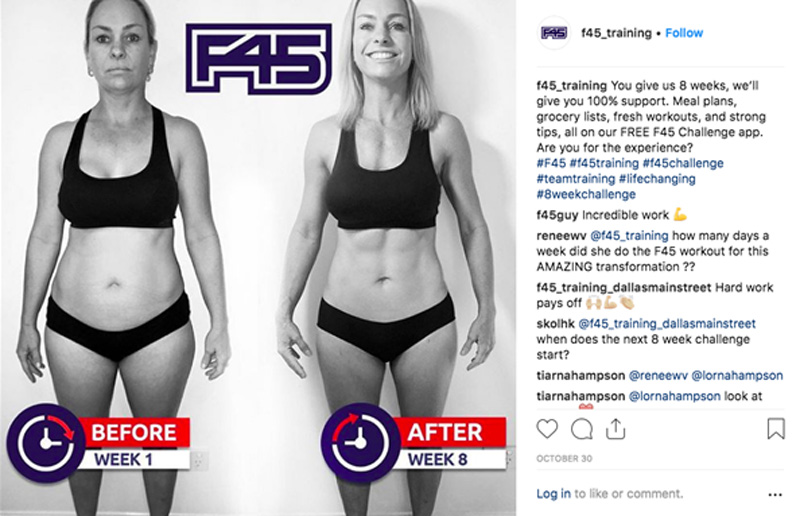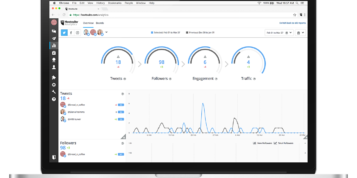When done effectively, social media allows small businesses to grow a loyal and engaged follower base across their platforms. This can increase brand awareness, foster customer advocacy, and help small businesses better understand their customers.
When done ineffectively, however, social media can become a burden for business owners and fail to drive any added value. Research from the Chartered Institute of Marketing reveals that 42% of UK consumers receive marketing via social media every day, but half of these say the content is irrelevant to them.
So, how can small businesses use these platforms to better understand their target audience? Before you start tweeting, you need a clear picture in your mind on who you’re speaking to, by thinking deeper about your customers’ daily challenges. Here are three steps you can take to ensure your social media activity is on target:
1. Develop a customer persona for your business
Creating user personas is a helpful exercise for thinking about what your customer’s lifestyle looks like. To create a persona, you should be thinking about your customer beyond gender and location: How old are my customers? What are their occupations? What do their families look like? What are their goals? What social platforms are they actively on and when?
There are a few ways you can come up with the answers to these questions. The first step is to observe. See what types of customers come into your shop, email you, or follow your social accounts already. You also have access to demographic insights on social media platforms; while they only give basic demographic data, it’s a good starting point for understanding your customers.
Don’t cast too wide of a net saying your audience is “men and women between the ages of 18-64”. This won’t help you craft effective messages that make your customers feel understood.
If you’re the owner of a boutique gym or a self-employed personal trainer in London, here’s what a persona might look like for your customer:
Charlotte is 26 years old. She is single and works as a marketing executive for a startup in Shoreditch, East London. Charlotte leads a very busy lifestyle during the week, with long days at the office, networking and catching up with friends in the evenings and discovering all that London has to offer. She is health conscious and is always looking for ways to keep fit while leading a hectic lifestyle in the capital. Her favourite social network is Instagram, and she uses it primarily to follow her friends, and fitness/wellness accounts. She checks her feed on the way to work in the morning, during her lunch break and late at night while she is winding down.
Having a persona in mind will help the owner of a boutique gym create social media posts catered to the lifestyle and interests of Charlotte. For example, posting in morning, lunchtime and at night might be the best for this time-stretched professional.
An important part of the user persona is figuring out what social media platforms your customers are using. Your time is precious, and you don’t want to waste it by being on a platform that your customers don’t use.
You can have more than one persona for your business, however, there’s usually one that provides more value.
2. Learn what to post on social media
While you may think that filling your social feed with promotional information will drive sales, you need to take a step back and think about what your target audience wants to hear.
Are your customers looking for inspiration? In the boutique gym/self-employed personal trainer example above, if Charlotte is looking to get inspired, sharing examples of client success stories or motivational quotes might spark her interest. Are they looking for product or business information? Charlotte might have specific fitness goals in mind, so she will be interested in the benefits of certain classes and the credentials of the trainer(s). Are they aware of sales and promotions? If Charlotte is on a budget, she will want to know if you offer discounts on membership or personal training sessions if she signs up to a certain number. Or, do they have pain points you can solve with educational resources? We know that Charlotte has limited time, so it may help if you create content like informative blog posts on quick exercises she could do from home.
But how do you know what your audience wants to hear from you on social media? Start by asking them. The polling feature on Instagram Stories is a great way to ask your fans what topics they want to hear more about. If you don’t have a lot of followers or enough access to customers, you could test different subjects and learn about which perform best. Try posting something educational followed by something promotional. Which post got the most comments, likes, and shares? Take a month to test which type of content works best for your audience. Make sure you have a system in place to record each post, the day and time it was sent out, the goal of the post, and any engagement metrics.
Overall, it’s important to ask yourself these questions before posting anything on social media: “What am I hoping to achieve for my business with this post?” and “What is the value I’m bringing to my audience?” Once you stop only thinking about your own goals and start thinking about your audience’s desires, you will start attracting followers.
3. Decide how often you’re going to share that message with your audience
There is no right answer as to how often to post on social media, but answering these questions will help you decide what a good balance looks like:
- How much time and resources can you realistically allocate towards posting on social media for your business per week?
- How many relevant messages do you have to share with your followers this week?
- How often do your competitors post on their social platforms?
- Are you seeing audience growth with your current posting tactics?
Remember that not all messages have to go to all customers. Using the targeting features on social platforms will increase how relevant your posts can be. For example, the boutique gym owner/personal trainer might target Charlotte with posts about new evening classes, while also targeting other “Charlotte’s” who just arrived in London with details of trial sessions or discounts for new members.
You should also consider your advertising budget. While posting on social media is free, if you have a message you want to be seen you need to put money behind it. In the beginning, try testing certain amounts of budget (for example, £20 on one post and £50 on another post) and see how your social media performance on those posts compare to your non-paid posts. Look at the difference in reach, follower growth, engagement rate, and click-through-rate if you’re sharing a link. Once you’ve seen how much of a difference promoting a post with your advertising budget can make, you can start looking for the sweet spot for how much to promote per post.
As a time-pressed small business owner, your social media activity needs to drive ROI. Taking time to understand your online audience will make your content work harder for you.






